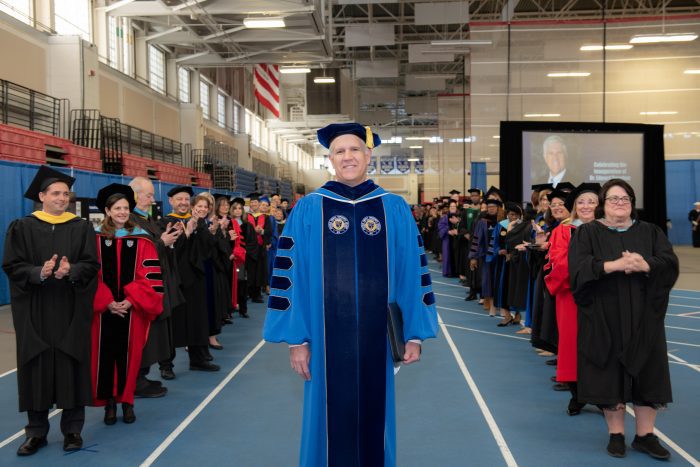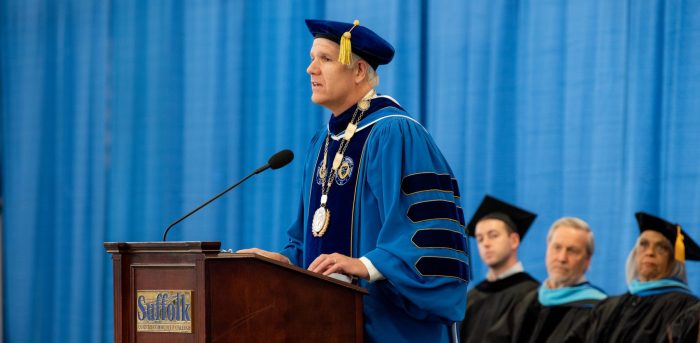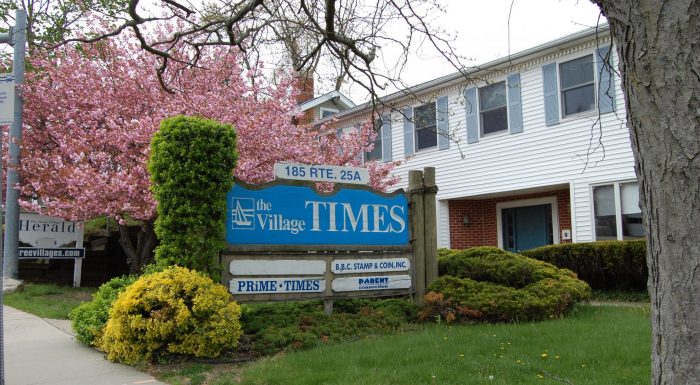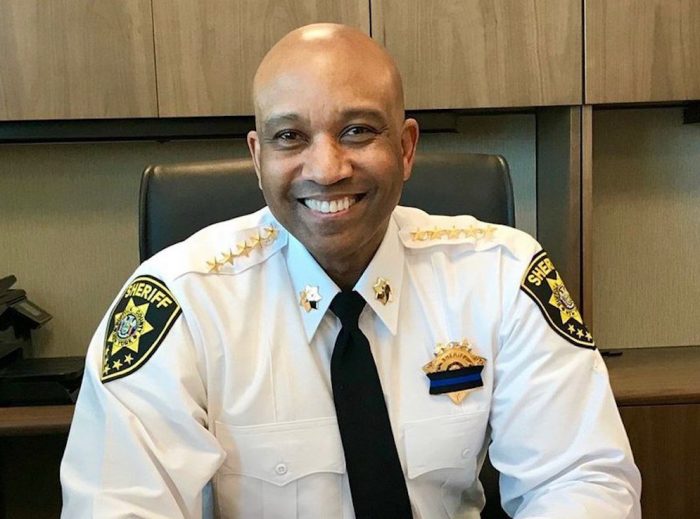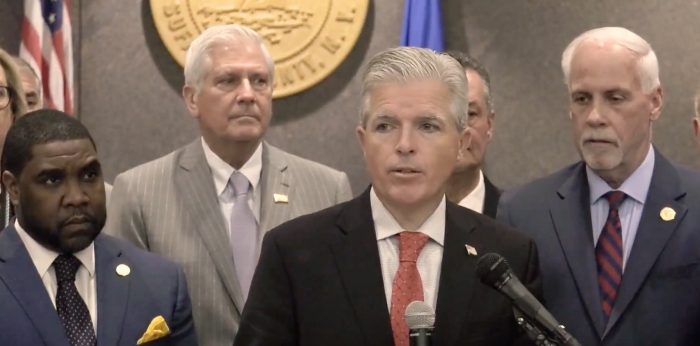On Friday, April 8, Suffolk County Community College celebrated the inauguration of Edward Bonahue as the college’s seventh president.
Bonahue, who took office in June 2021, was joined by students, educators, community leaders and public officials at the Suffolk Federal Credit Union Arena on the Michael J. Grant Campus in Brentwood. During the event, various speakers had an opportunity to share their respective visions for the community college under Bonahue’s direction.
Sarah Kain Gutowski, a professor of English at SCCC, delivered the inaugural poem, “A Shared Relief.” Gutowski’s poem reflected upon the setbacks faced by the Suffolk community because of the pandemic and offered a message of reassurance and hope.
“Perhaps memory serves us best when it reveals this: That after the onslaught of illness, fear, isolation and doubt, privation and poverty, empty rhetoric and tenuous polity, something remains,” Gutowski said. “Being together again, communing in this space whether virtual or real, masked or unmasked, standing six feet apart or three, is the way to recovery. Our eyes reflecting shared relief, it says, ‘Good, you’re still here.’”
Among the group of inaugural speakers was Suffolk County Executive Steve Bellone (D), who commended Bonahue for his leadership qualities and for his unique ability to generate partnerships throughout the community.

“We are fortunate now to have a seasoned higher education executive with more than 20 years of experience in community college education leading this great institution,” Bellone said. “If the last 10 months tell us anything, it’s that Dr. Bonahue is a proven leader. Throughout the course of his career, he has successfully implemented creative programs and creative, innovative partnerships.” The county executive added that these are “all talents he has brought with him to his role as our new president.”
Bellone also touched upon Bonahue’s local roots, which he considered vital for the continued connection between residents and the community college: “Dr. Bonahue not only has the experience and know-how to lead this incredible institution, but we know he has a special interest in seeing this region succeed as a native Suffolk County resident and graduate of Ward Melville High School.”
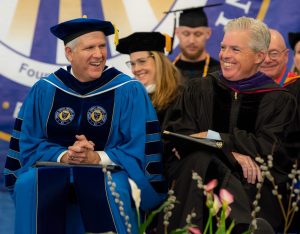
Mary Reid, member of the SCCC Foundation Board of Directors and a tax preparer based in Bay Shore, said Bonahue had met with over 100 community representatives from various organizations throughout the county in September 2021. Since that initial meeting, Bonahue has already strengthened the ties between SCCC and its community partners.
“Dr. Bonahue, you and your staff have kept in contact and have begun to implement the suggestions offered that morning,” Reid said. “You have interacted with library directors, with superintendents of schools, labor leaders, civic groups, religious leaders and mothers wanting to attend college who were seeking day care and financial aid,” adding, “We thank you so much for that.”
Reid said jokingly, “Anyone who knows me knows that I cannot leave without asking for something.” Addressing Bonahue, she said, “Today I ask you to add to your to-do list a program that will meet the needs of persons with disabilities, especially those with Down syndrome,” adding, “Also remember to engage in frequent updates to the community groups.”
Representing the student body was Zachary Frost. He celebrated the appointment of Bonahue as president, arguing that Bonahue intends to bring quality higher education opportunities to low-income families throughout the county.
“The first time I met President Bonahue, we spoke about the many resources made available to students to ensure their success,” Frost said. “President Bonahue wanted to streamline access to these resources and make them more readily available to any student who may be struggling. It was in this meeting that I saw President Bonahue’s passion for driving success, especially for those at a disadvantage.”
Frost described the challenges of growing up in a single-parent household and of being raised by a parent who struggled to make ends meet. “I remember as a young child, probably six or seven years old, my mother didn’t have the easiest time going through college, whether it be financially or her trying to find someone to watch me while she was in class,” he said. “I can’t help but wonder, had she been a student here at Suffolk County Community College and had access to all of these amazing resources, like our food pantry, writing centers, hardship funds and on-campus day care centers, accompanied by caring professors and a great faculty, she probably would have had a much healthier college experience.”
Dr. Bonahue, on behalf of our three bargaining units, the Faculty Association, AME, the Guild of Administrative Officers, and the executive leadership team, we welcome you, we welcome your family, to our community.
— Dante Morelli
Representing the SCCC employees and the Suffolk County Association of Municipal Employees was Dante Morelli, professor of communications. He said AME union members are the engine behind the entire operation at SCCC’s campuses and downtown centers.“President Bonahue, I’m going to let you in on a little secret that you probably already know,” Morelli said. “If you really want to know who keeps the college running, it’s the members of AME. It’s the members of AME who are often the first voice and/or a face a student sees or hears when they walk onto campus or pick up the phone to ask for assistance.” He added, “Dr. Bonahue, on behalf of our three bargaining units, the Faculty Association, AME, the Guild of Administrative Officers, and the executive leadership team, we welcome you, we welcome your family, to our community.”
To access our coverage of Bonahue’s inaugural address, click here.

